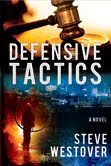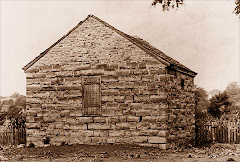 In reviewing Dan Harrington’s memoir, Who’s At the Door, I wrote about one of the classic master plots, STRANGER COMES TO TOWN. Today I’d like to talk about the second great master plot, HERO TAKES A JOURNEY, as I review Joan Sowards new novel, The Star Prophecy: A Book of Mormon Adventure.
In reviewing Dan Harrington’s memoir, Who’s At the Door, I wrote about one of the classic master plots, STRANGER COMES TO TOWN. Today I’d like to talk about the second great master plot, HERO TAKES A JOURNEY, as I review Joan Sowards new novel, The Star Prophecy: A Book of Mormon Adventure.The theory is this—virtually every story will fit into one, or both of these 2 master plots with varying degrees of complication and creativity. With STRANGER COMES TO TOWN, the arrival of a person, a force, or even an unexpected event throws the main character’s life into upheaval. Maybe it’s a friend, like Jimmy from Defensive Tactics showing up to ask his friend for help, or a pair of missionaries knocking on the door, or a spaceship that arrives and hovers above a city, or a tidal wave that capsizes a cruise ship. In each case a “stranger” enters the scene and creates some kind of conflict that propels the story forward.
With HERO TAKES A JOURNEY, the story centers on a physical, emotional or spiritual journey the main character embarks upon. It may be that he is forced to take a journey like Jesse James running from the law, or he may choose the journey out of a sense of duty like Frodo Baggins, or out of a sense of adventure like Luke Skywalker. Fitting a story into one of these master plots may be a stretch for some novels, but for the Star Prophecy, the fit is easy and fun.
Enoch is a young man with a mission. The great desire in his life is to sail from Zarahemla back to the land of his forefathers in search of the Messiah. He searches for and follows the signs of the Christ’s birth with faith and zeal. He prepares for years and when the time is right, he embarks on his quest to find Jesus. Enoch is our Hero and his journey is the ultimate quest to find the Savior so that he can return to his people and testify of His divinity.
The story of Samuel the Lamanite preaching about the signs of Jesus’ birth is one of my favorite Book of Mormon stories, but I had never considered the possibility that a Nephite would follow the signs back across the sea to Jerusalem in search of the Christ. What a wonderful concept! I was hooked immediately. The cast of characters fills out nicely with the “scoundrel”, the “devoted friend”, a “love interest”, and a “mentor” who leads the young men on their trek.
The journey was enjoyable and the relationships were interesting. I only have two minor criticisms. 1- Enoch was a little bit of a flat character. He started out as such a faithful young man (he had to be to begin such a quest) that there wasn’t a lot of room for him to grow as a character. Having said this, Enoch did outgrow his need for his mentor to direct him in all things. His scoundrel friend Kumeni on the other hand had plenty of room to grow. Kumeni’s journey was both physical and spiritual. He changed gradually and realistically.
2- Although the novel is set at the time of Christ’s birth, the language and descriptions didn’t fit the time. For example, there is a conversation between Enoch and a shepherd where the shepherd spoke with the kind of poor grammar that Jim used in speaking with Huck Finn. I understand that the author was trying to convey that the shepherd was uneducated and simple but it took me out of the moment. In defense of the author, I almost always have a problem like this with stories set back in time so this may be more of an indictment of me as a reader than anything else.
I really enjoyed The Star Prophesy and recommend it to my friends. With the Book of Mormon references and strong master plot, it’s like a familiar friend who manages to surprise with a wonderful idea and an engaging story. I congratulate Joan on this fun and thoughtful read. Click here to purchase.
*Though I received an ARC of The Star Prophecy, it in no way in influenced my review.























Sounds like a great plot and book. I want to read it. I've heard lots of good htings about it!
ReplyDeleteFascinating take on those plots. Many will say there are 20, 30, or more basic plots, but you've whittled it down to 2--interesting.
Thanks Rebecca, In case you haven't noticed, I am much more simple minded than many people :>)
ReplyDeleteI would like to take credit for it, but the theory was part of a lecture presentation I audited last summer (can't remember who gave it). I like the theory because its simple and kind of a fun exercise to test if it works on a specific book.
Interesting review, Steve.
ReplyDeleteThank you, Steve, for the great review.
ReplyDeleteThanks Danielle.
ReplyDeleteJoan, you're very welcome. I enjoyed it.